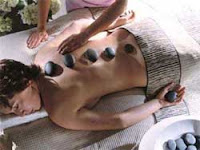Arch Phys Med Rehabil. 2009 Aug; 90(8): 1332-9Yoon SH, Rah UW, Sheen SS, Cho KHOBJECTIVES: To investigate (1) the relation between needle diameter and treatment efficacy of myofascial pain syndrome and (2) the relation between needle diameter and pain intensity during injection. DESIGN: Randomized controlled trial. SETTING: University-affiliated tertiary-care hospital. PARTICIPANTS: Volunteers (N=77) with myofascial pain syndrome affecting upper- and middle-trapezius muscles with at least 3 months' duration of pain. INTERVENTION: Participants were randomly assigned to receive trigger point injections on 1 side of the trapezius with a 21-, 23-, or 25-gauge needle. After a 1-time injection, participants were followed up for 14 days. Participants and the assessor were blinded for group assignment. MAIN OUTCOME MEASURES: Treatment efficacy was measured with the visual analog scale (VAS; at pretreatment, and posttreatment on days 1, 4, 7, 14) for neck and upper-back pain, the Neck Disability Index (NDI; at pretreatment, and posttreatment on days 7, 14), and the Medical Outcomes Study 36-Item Short-Form Health Survey (SF-36, at pretreatment and posttreatment on days 7, 14) for health-related quality of life. Pain intensity during injection was evaluated immediately after injection with VAS. RESULTS: VAS scores for posttreatment on days 4, 7, and 14 decreased significantly compared with pretreatment scores in all groups; NDI scores on days 7 and 14 decreased significantly compared with pretreatment scores in all groups; SF-36 scores on days 7 and 14 decreased significantly compared with pretreatment scores in the 21- and 23-gauge needle groups; and SF-36 score on day 14 showed significant difference between the 21- and 25-gauge needle groups. For pain intensity during injection, VAS scores indicated no significant difference between the 3 groups. CONCLUSIONS: No difference between the needle types was observed in terms of VAS or NDI, or in terms of pain intensity felt by patients during injection. In terms of SF-36 scores, injections with 21- or 23-gauge needles were found to be more effective. However, a well-controlled investigation is needed to explore the effect of needle thickness on health-related quality of life.



